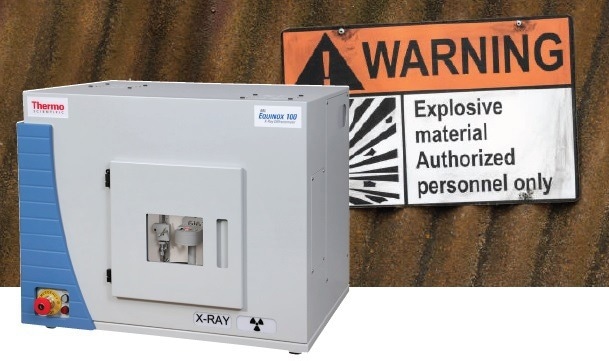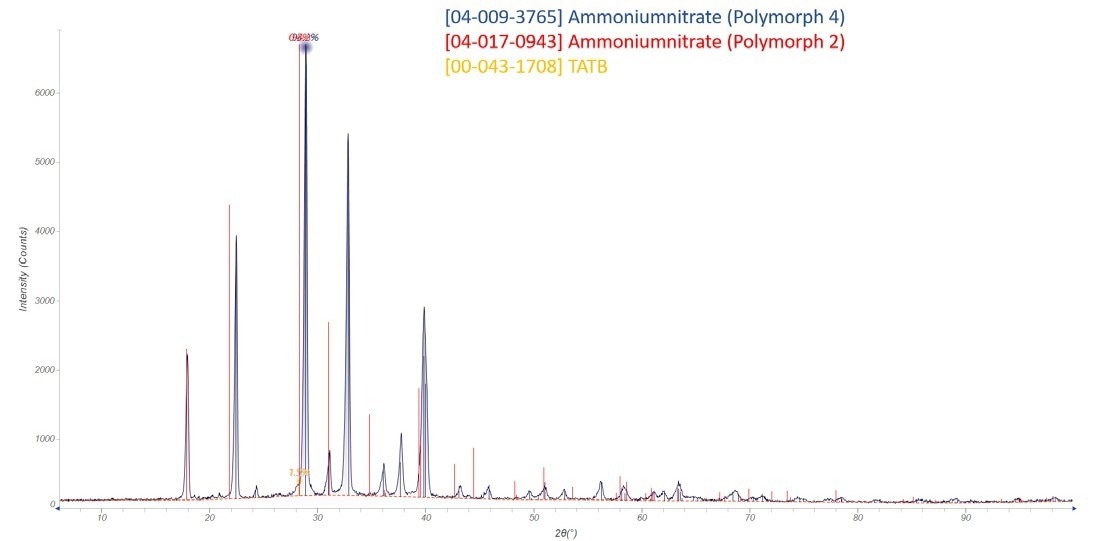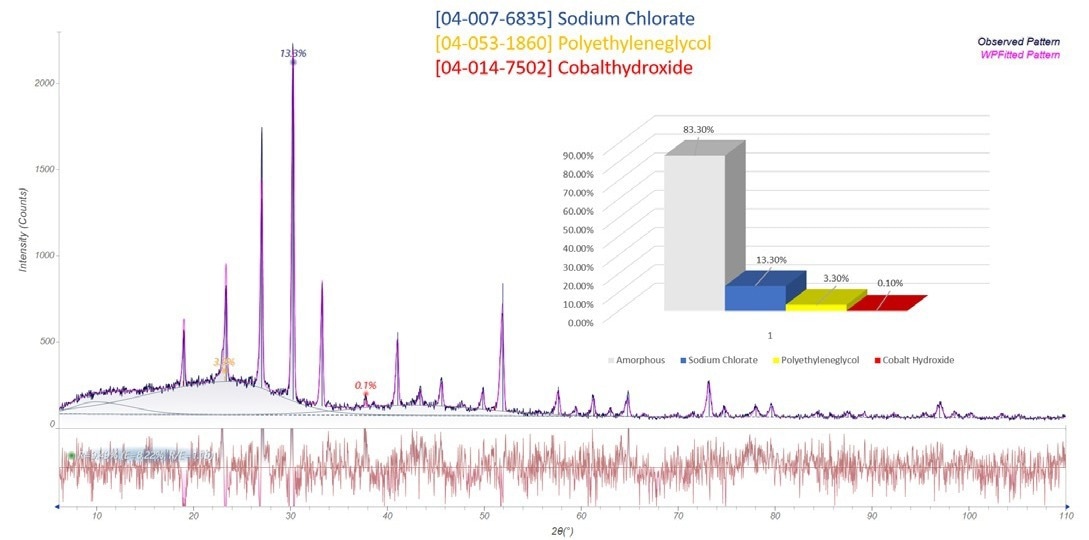Explosives analysis is a significant part of forensic science. As a result of the persistent threat of attacks caused by terrorist organizations and criminals, it is vital to enhance explosive detection and analysis methods, even if case numbers are lower than other forensic applications, such as drug analysis.
Aside from forensic work within law enforcement agencies, there is a demand for mobile laboratories in hot zones from military bodies and contractors due to the extensive thread of improvised explosive devices (IEDs).
Nearly 60% of forensic cases include intact explosive devices such as grenades, IEDs, or illegal fireworks. A crucial part of forensic explosives investigations is rooting the origin of the explosive and also clustering similar samples.
Explosive materials contain side phases due to storage, synthesis, or mixing. Investigations on remains from explosions, such as parts of casings, enable drawing conclusions about the type of explosive device.
X-Ray diffraction (XRD) is an efficient technique for examining crystalline materials and mixtures for explosive materials to be determined. The Thermo Scientific™ ARL™ EQUINOX 100 benchtop XRD instrument is considered a transportable and adaptable tool that ideally fits the needs of forensic science.
Instrument
The ARL EQUINOX Series constitutes a portfolio of XRD instruments from easy, user-friendly bench-top systems for routine analysis to highly advanced floor-standing and research-grade systems.

Figure 1. ARL EQUINOX 100 diffraction system. Image Credit: Thermo Fisher Scientific - Elemental Analyzers and Phase Analyzers
The ARL EQUINOX 100 applies a custom-designed 50 W (Cu or Mo) or 15 W Co high-brilliance micro-focus tube along with mirror optics which does not need an external water chiller.
It is possible to transport the unit between laboratories or into the field without needing any unique infrastructure and operated using batteries or other low-grade power sources due to their low power consumption (100 W).
The ARL EQUINOX 100 (Figure 1) offers very quick data collection than the other diffractometers as a result of its special curved position sensitive detector (CPS) that quantifies all diffraction peaks concurrently and in real-time.
Experimental
Powdered explosive samples were offered by law enforcement authorities and quantified as is in reflection utilizing an ARL EQUINOX 100 with Cu Kα radiation (5 minutes). Data evaluation (qualitative and quantitative) was executed with the help of MDI JADE 2010 and ICDD pdf4 Organic database. Quantification (crystalline and amorphous parts) was performed with the help of WPF Rietveld refinements.
Results
Several explosive-related compounds are mixtures of amorphous (for example, binders) and crystalline parts. The mixtures could consist of numerous components, such as oxidants and reductants or various blended explosives, for improved performance.
It is sometimes possible to determine contaminants from storage or synthesis, particularly in improvised explosives.
Ammonium Nitrate is vastly available as it is an extensively utilized fertilizer. Figure 2 displays a sample of Ammonium Nitrate consisting of traces of Polymorph 2 and TATB (triaminotrinitrobenzene) but mainly Polymorph 4.
Sodium Chlorate is an example of a commonly available material that could be used easily as an explosive.

Figure 2. Ammonium nitrate (10 min measurement time). Image Credit: Thermo Fisher Scientific - Elemental Analyzers and Phase Analyzers
Figure 3 displays a mixture of Sodium Chlorate with PEG (polyethylene glycol) and traces of Cobalt Hydroxide. Around 80% of the sample is amorphous, which is the most likely part of the PEG.
TNT (trinitrotoluene) is known to be one of the most utilized explosives in military applications.

Figure 3. Sodium Chlorate mixture (10 min measurement time). Image Credit: Thermo Fisher Scientific - Elemental Analyzers and Phase Analyzers
A lot of mixtures with other explosives are in use at present. Figure 4 displays a TNT sample with traces of Octogen and Triethylaminium Picrate.

Figure 4. Trinitrotoluene TNT (10 min measurement time). Image Credit: Thermo Fisher Scientific - Elemental Analyzers and Phase Analyzers
Conclusion
The ARL EQUINOX 100 XRD has the potential to gather data on explosives in just five minutes of measurement. The combination of MDI JADE 2010 and ICDD pdf 4 Organics database enables quantitative and qualitative phase analysis (WPF Rietveld refinement) of the samples.
The outcomes obtained clearly show the kind of explosive material as well as trace phases. As a result of the low footprint and energy demand, as well as the tough design of the ARL EQUINOX 100, it is ideally suited for a mobile laboratory in a rough setting.
This was adapted from materials by Dr. Simon Welzmiller from ThermoFisher Scientific.

This information has been sourced, reviewed and adapted from materials provided by Thermo Fisher Scientific - Elemental Analyzers and Phase Analyzers.
For more information on this source, please visit Thermo Fisher Scientific - Elemental Analyzers and Phase Analyzers.